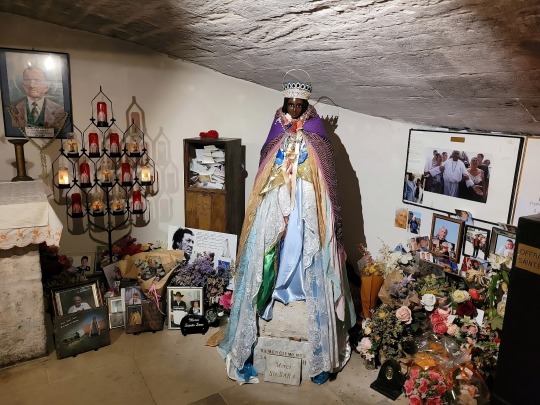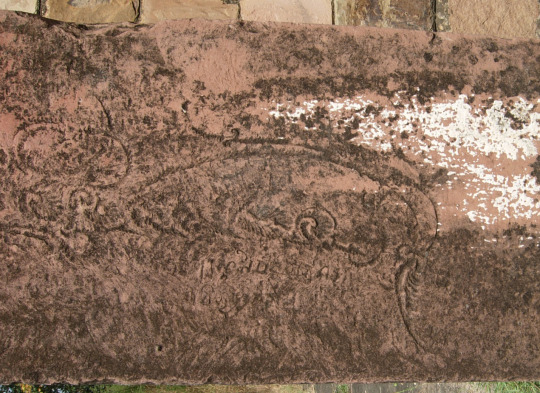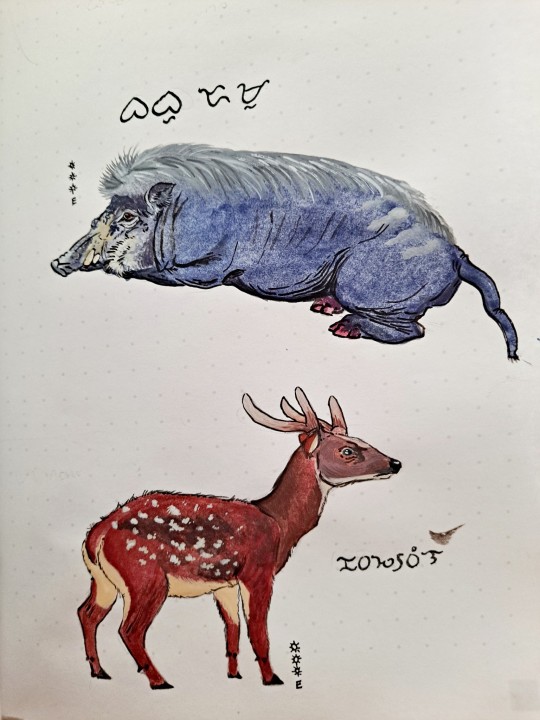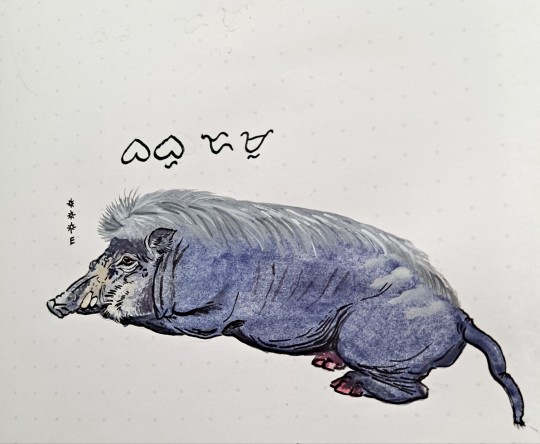#Brahmic
Text
A-BRAHM vs BRAHM-A
The first mention of Abram is in the Book of Genesis (11:26) of the Hebrew bible.
The first mention of Brahma is in the hymn 10.121 (a later Mandala of the Rig Vedas) also known as the Nasadiya Sukta, which is believed to describe the origin of the universe.
#abraham#abram#abrahamic#brahmic#brahmi#brahma#brahaman#brahaminism#brahminization#hindu#indu#indus valley#meluhha#melakam#dravidian#tamil#jew#jewish#judaesm#judaism#ancient history#ancient civlizations#religion#patriarch#patriarchy#men#book of genesis#vedas#vedic#vedism
0 notes
Text
Tiny Whore Paisley Pepper Has Her Pussy Stretched
Tempting Reagan Foxx lovingly scissoring with stepdaughter
young teen humping pillow and cum
Sfm
Karlee Grey deepthroating a huge black cock
Drunk milf made nude to fuck her asshole
Teaching my GFs MOM to sext on SNAP
Boys males porn and free monster gay bondage white twink Face pounded
Put Your Glasses On And Watch Closely The Brazilian PornStar Melissa Devassa Washing Her Big Body
Anal com puta safada
#Wurtsboro#cinematographically#acronichally#Schizophyta#pinkish#Italo-classic#stereochemic#aconitums#fpsps#Shammai#perfidy#self-called#pneumographic#sapajous#tough-metaled#Brahmic#broughams#Kwon#ushabti#flucti-
0 notes
Text


the shrine of saint sarah in the church of the saintes-maries-de-la-mer in in the camargue in france. the church itself was built in the 9th century and named for and dedicated to the three marys. a popular french legend goes that they and their maid, sarah, landed on a camargue coast.
saint sarah, or sarah-e-kali (sarah the black, “the black” is a title sometimes given to black/dark-skinned saints) in romani, is the patron saint of roma people in latin catholicism, though she isn't recognized by the catholic church. she is also revered as a protector for marginalized and poor people in general. her origins are thought to lie in a syncretization of the hindu goddess kali, the story of sarah along with the three marys, and the tradition of black madonnas. (christian roma have historically venerated other black madonnas as well.) the church is her major shrine - she's venerated here annually on the 24th of may by roma pilgrims.
#france#romani#interior#worship#christian#my posts#brahmic (hindu buddhist etc) deities are syncretized into a bunch of very specific forms depending on where you look#and one can have a bunch of different forms that are ultimately the same being/idea#it fits perfectly into the concept of saints if you think about it#not that people think saints are gods but the like. manifestations thing#i think there's some syncretic christianity/west african religions/hindu traditions in places 18th/19th century enslaved indians#were shipped to (mostly in central/south america which has a big history of syncretic christianity in general)
11 notes
·
View notes
Text



Shankhalipi (IAST: Śaṅkhalipi) or "conch-script" is a term used by scholars to describe an undeciphered, highly calligraphic Brahmic script that resembles spiral seashells which can tentatively be assigned a new script family. They are found in inscriptions across various parts of India except the far south and date to between the 4th and 8th centuries CE. Both Shankhalipi and ornate Brahmi were stylised scripts used primarily for names and signatures. Examples of this script have been found as far away as Thailand and Indonesia.
307 notes
·
View notes
Text
Going on a deep dive into Japanese writing systems is fun cause I've ended up learning about completely incidental things like historical spellings, Brahmic scripts, why statiōnem became stazione in Italian, and how it's actually really normal that British people say "Chewsday"
674 notes
·
View notes
Text
Posting Schedule: April & May 2024
I'm merging the months since the April anniversary project has outgrown April rather egregiously. It is funny how I said just last month that I'm cutting down my updates to four a month, and now we have eight each for these two months. But to be fair, the word count is pretty much the same because these are shorter fics (...mostly).
April:
2. Chapter 1/1 of the history book on the shelf is always repeating itself
JJK; goyuu; When Yuuji’s fifteen, Gojou Satoru dies; when Yuuji’s seventeen, Gojou Satoru is born.
6. Chapter 1/1 of (it wasn't hard to realize) love's the death of peace of mind
JJK; goyuu; When a blip in time lands sixteen-year-old Satoru in the future, he finds himself in possession of a cursed object sporting his own eyes and a grieving boy who can’t look away from those eyes.
12. Chapter 1/2 of because the negative sex was born into a bloodline
JJK; kenita; Yuuji makes reasonable assumptions about the handsome man stalking him. Kenjaku gets to enjoy the fruits of their labor.
14. Chapter 1/1 of caught the teacher giving his eyes to a student
JJK; goyuu; Megumi finds out that Gojou’s been giving Yuuji some hands-on sex education.
19. Chapter 1/1 of will we remain stuck in the throat of gods
JJK; sukuita with past!goyuu; A bad breakup isn’t a good excuse to fuck the monster rotting your soul, but Yuuji’s made worse decisions—probably.
23. Chapter 1/1 of this was something you incited, you opened up and invited
JJK; goyuu; Satoru learns why most alphas don’t fuck other alphas.
26. Chapter 1/1 of we can be anything we want to be (make shit up and live it completely)
JJK; goyuu; An offhand comment leads to Yuuji discovering the dubious joys of pet ownership.
30. Chapter 1/1 of this is the wrong story
JJK; goyuu; In a faraway forest enclosed in Brahmic barriers, there’s a boy who loves and hates the world in equal measure.
May
3. Chapter 1/1 of vulgarity (the glory and the virtue died so long ago)
JJK; goyuu; Yuuji’s hormones battle his morals while his half-naked teacher sleeps on his lap.
8. Chapter 1/1 of somebody ought to corrupt you on the dance floor and take you home
JJK; hiita; A wardrobe malfunction drastically alters the aftermath of Yuuji’s fight with Higuruma.
10. Chapter 1/1 of never seen such a pretty wicked thing
JJK; goyuu; Satoru has a late-night philosophical discussion with the King of Curses.
15. Chapter 2/2 of because the negative sex was born into a bloodline
JJK; kenita; Yuuji makes reasonable assumptions about the handsome man stalking him. Kenjaku gets to enjoy the fruits of their labor.
19. Chapter 1/1 of i'll worship like a dog at the shrine of your lies
JJK; goyuu; Satoru’s ward is in that peculiar purgatory between puberty and presentation. He tries to help.
23. Chapter 1/1 of you're like a goddess in disguise (i'm drowning slowly in your eyes)
JJK; fem!goyuu; Yuuji finds religion in her teacher’s tits, violently.
26. Chapter 1/1 of but lover, you're the one to blame
JJK; goyuu; Yuuji acquires a doll that’s sympathetically connected to Satoru. It’s innocent until it isn’t.
31. Chapter 1/7 of i can offer you a black-lit paradise
JJK; itagofushi; Satoru plays favorites with his students in the worst way possible. Megumi suffers, while Yuuji’s oblivious—and horny.
The dates are tentative, the order isn't set in stone, and I am about to become void soup.
If anything's repeated or mismatched, ignore for now. I'll look over this again when these fic titles/dates aren't at risk of setting my eyes on fire.
24 notes
·
View notes
Note
It's a shame fans ignore Hari Bulkan. It's very clearly a nod to Dante Basco's Filipino heritage and a way of keeping that significance alive since most of the ATLA voice actors were white instead of Asian. Although the word "Bulcan" itself comes from the influence of Spanish colonization (I cannot emphasize how horrific that colonization was and continues to be horrific on our culture; they burned everything to the point my own parents didn't know we had our own writing system, a pantheon of gods, and the fact the word "bahala" [a word Filipinos use at least once a day] comes from the name Bathala, our creator god). Hari Bundok would have been more accurate in the sense that pre-colonial Filipinos' word for mountains and volcanos are the same since, being a nation of over 7000 islands, most mountains ARE volcanos and there was no need for that distinction because we were the inhabitants.
Hari does mean king or monarch in Tagalog, but (coincidentally [?]) is also one of the names of the Hindu deity Vishnu. I say coincidentally[?] because the pre-colonial Philippines was a major trading point and essential "pit-stop" en route. Our pre-colonial writing system, Baybayin, is a brahmic script, meaning it a descendant of the Brahmi script of ancient India!
And of course, Agni is a Hindu deity. Agni lost prominence in the later/post Vedic Era, but scholars believe they were foundational to creator-preserver-destroyer thought in Hinduism, which is also significant when looking at Zuko's personal and spiritual journey and a wielder of fire.
I bring all this up not only because of representation in ATLA and ATLA fandom, but also because of the negative "social hierachry" treatment India and Southeast Asia experiences within greater Asia. We are browner, considered inferior, less beautiful, less culturally sophisticated, and have experienced a history of violent colonism more frequently, and sometimes beneath the heel of, our East and Northeast Asian cousins. For anyone with Indian or Southeast Asian heritage, that common feeling was named by comedian Ali Wong who distinguished between "fancy Asians" versus "jungle Asians"
That was really informative! Thank you for taking the time to share this with me!
132 notes
·
View notes
Text

Is it though? If both "Geto" and "Megumi" are dead, the Culling Game won't end. The only other way to end it is for all remaining players to die or they find the Brahmic barrier and destroy it, but that would mean an increase in curses if they can even manage to destroy the barrier. Or they somehow force a rule that negates Kenjaku's set end of the Culling Game, but that questionable too.
This is a clever rule addition on Kenjaku's part. Even if the protagonists succeed and they & Sukuna die, there will still be fighting among players and people will indirectly hone their skill and further their personal development and understanding of cursed energy. I suspect that Kenjaku also hopes this would improve Yuuji's abilities further. They pass on their legacy if you want to be dramatic. Yuuji was signed up to the Culling Game from the beginning after all and I don't think that was just because of Sukuna. Or Kenjaku's intension behind it wasn't just to make Sukuna a player in the Culling Game. Yuuji has done leaps in skill, ability and understanding of himself, which indirectly helps the control of his body. Add onto that Yuki's findings and Yuuji might actually develop an understanding of his soul and mastery of cursed energy that might even surprise Kenjaku. Exactly what they're looking for.
In regards to the other new rule, to block any new players would also mean that Gojo can't enter the colonies. I guess that could serve as a stalling option, if Sukuna stays in Sendai for example, in addition to the uncertainty of where Kenjaku is. In case Gojo does come back some time soon. Seems like a pretty tedious and forced way to make sure Kenjaku and Sukuna don't immediately die against him, but we'll see how it's executed.
#jjk spoilers#jjk 220#please just don't let Gojo be the one to kill Kenjaku#I want Yuuji to have his matricide moment
46 notes
·
View notes
Text
also btw when i'm talking about different cuneiform traditions, the difference between "sumerian tradition" and "old persian tradition" is not of the latin vs. cyrillic vs. greek alphabet kind – in this comparison, those would all fall under a single tradition: the egyptian hieroglyphic one, because the phoenician alphabet (which gave rise not only to the aforementioned three scripts commonly used today, but also arabic, hebrew and all forms of brahmic scripts, from devanagari to burmese to thai) derives from it.
no, the relationship is actually quite nicely paralleled by the difference between the chinese characters and hangul: they use the same base (wedges combined into signs : strokes combined into blocks), but there are much fewer parts (hundreds of signs vs. 35 basic signs : thousands of characters vs. 40 basic constituents) and most importantly they are nothing alike (both are made from scratch)
33 notes
·
View notes
Text
Glyphs in scripts/languages that represent "nya" /ɲa/
Ge'ez: ኛ
Brahmic: 𑀜
Burmese: ည
Grantha: 𑌞
Gujarati: ઞ
Devanagari: ञ
Kannada: ಞ
Hangul: 냐
Lao: ຍັ
Malayalam: ഞ
Thaana: ޏަ
Oriya: ଞ
Punjabi & Sindhi (gurmukhi): ਞ
Sindhi (perso-arabic): ڃَ
Sindhi (khudabadi): 𑋅
Sinhala: ඦ
Tamil: ஞ
Telugu: ఞ
Tibetan: ཉ
8 notes
·
View notes
Note
what is it like learning sanskrit!! i want to learn but i don’t know where to start
it's slow going but it's really rewarding. there aren't as many resources on it in english compared to other classical languages but the ones that exist are really fantastic. i prefer learning through physical books and i've found that with sanskrit that's really the only way to get a full in depth understanding unless you have the ability/access to take a class or course in the language.
i've been using a variety of (used) books to teach myself, but in particular i've been using "sanskrit: a complete course for beginners" by michael coulson as my Main reference and it really is an incredible resource and one that i highly recommend getting your hands on if you're interested in the language. he encourages not only learning to read sanskrit but to be able to write/read in the nāgāri script (which is incredibly helpful if you also want to learn hindi or any other language that uses a brahmic script. there are SO many languages in the brahmic family across south and southeast asia so being able to read one would make it easier to learn others - in my case, it's a path to being able to understand punjabi and the gurmukhi script) and to be able to pronounce/speak in sanskrit, which many other resources don't emphasize. so the book touches a lot on things like phonetics as well as methods of writing nāgāri for right handed vs left handed people - which matters actually, and its important to me bc i'm left handed! - and uses not only english sounds but french and other european languages as comparisons when discussing pronunciation which is really helpful. it's both very thorough and easy to follow which is a difficult line to tread but the author does it really successfully.
the other books i have that i've been referencing are "introduction to sanskrit (part one)" by thomas egenes and "sanskrit grammar" by william dwight whitney. i also use learnsanskrit.org which has a ton of free information available on both nāgāri and sanskrit. the goal for me is to be able to read and translate original texts in sanskrit, which will be valuable in my historical studies as well as aid in eventually learning punjabi. there are fewer resources for punjabi esp in gurmukhi (and ones i've found so far are not so great in quality imho but i'm always looking for better options) so i figure it would be easier if i already have a background knowledge in its ancestor language, kind of like how understanding latin would make learning a modern romance language more intuitive. i really want to truly understand sanskrit and punjabi the way that i am able to fully understand the nuances and depths of english, to have that intuitive grasp of it's inner workings and internal logic systems and genuinely know these languages, so i think this route is the best approach for me unless i can find in-person language classes.
37 notes
·
View notes
Text
These two are endangered but fascinating animals native to the Philippines, the Philippine Warty Pig (Baboy damo) and Visayan Spotted Deer (Kabang binaw) found in as you probably guessed, the Visayas.
As for the writing, pre-hispanic Philippine scripts are usually collectively described as suyat or surat- alphasyllabries which allowed entire islands to be literate. The script itself is descended from Kawi, a brahmic system one used my most Southeast Asian languages before diverging into scripts like Old Javanese and Sumatran.
I wrote Baboy Dano in the precolonial form of Baybayin (Tagalog Script) which drops final consonants and does not have characters for introduced words
Kabang Binaw I wrote in Suwat Bisaya, the specifically bisaya script using the post-colonial panantang pantingog to kill the final vowel.



44 notes
·
View notes
Note
Kannada, my mothertongue :) it's also a dravidian language
I don't have any experience with Dravidian languages unfortunately but I think the script is really nice. I once made a spectrum of brahmic scripts from Round to Pointy and I love every single one of them.
15 notes
·
View notes
Text

Did you know that Lao shares similarities with Thai, making it almost intelligible to speakers of both languages. It also has over 80 minority languages spoken by various ethnic groups. As a former French colony, many Lao people also speak French to a certain extent.
The Lao language, the official tongue of Laos
The Lao language, also referred to as Laotian, serves as the official tongue of Lao. It is part of the Tai language group, a branch of the Kra-Dai language family, which also includes Thai, Shan, and languages spoken by smaller, related ethnic groups in Laos, Thailand, Burma, southern China, and northern Vietnam. The languages in the Tai family all share a common grammar and tone structure.
Because Lao is very similar to Thai, many Laotians can understand spoken Thai, and those who are literate can read Thai as well. Lao is known as Isan in the northeastern region of Thailand, and is also spoken by the majority of the Isan people there, who share the same ethnic roots as the Lao people.
It features a tonal system with six tones in the Vientiane dialect: low, mid, high, rising, high falling, and low falling. Similar to other tonal languages, the tone of a word determines its meaning, therefore speakers must speak clearly to avoid misinterpreting what they are trying to express.
Like many other tounges, Lao has its own alphabet, made up of 28 vowel sounds derived from a combination of 26 consonant symbols and 18 vowel symbols. The Lao alphabet has the same Brahmic base as Thai and Khmer, however, unlike Thai, Khmer is unintelligible to Lao. It is written from left to right.
Minority languages in Laos
Khmu language
With over 500,000 speakers, the Khmu ethnic group is the largest in Laos and is mainly concentrated in the northern provinces.
The Khmu language is defined by the influence of surrounding state dialects, the number of consonants, and the presence of a vocabulary range that is normally simple to comprehend but more difficult to transmit between geographically distant speakers.
The tongue is mainly used by Khmu people among each other only, as they speak Lao when interacting with people in Laos' lowlands, working with government representatives, or going to school.
Hmong language
Hmong is spoken by the Hmong people who live in the mountains of Laos, Thailand, Myanmar, and China. There are two primary groups in this community: White Hmong (or Hmong Daw) and Green/Blue Hmong (or Hmong Njua). Despite their proximity, Hmong Daw is the main language, and the Hmong writing system, which has eight or twelve consonants, corresponds to the Hmong Daw dialect.
The primary distinctions between these two languages are in vocabulary, pronunciation, word structure, and grammar. However, over time, the two dialects have experienced various changes to increase mutual intelligibility. It's worth noting that most Hmong also speak Lao.
0 notes
Text
"Latent Impulses." From the Annapurna Upanishad, the Exploration of the Mysteries of the Queen of Foods.

I-27. All waverings between states of reasoning, etc., having vanished long since, his face steeped in the lovely light of Brahmic bliss, (the sage) attains the blessed state through right knowledge alone.
I-28. The inner cool (calm repose) of him who perceives this multitude of gunas (moods) as non-Self is said to be Concentration.
I-29. The steady mind is empty of latent impulses; the same is (the state of) contemplation. The same also is Aloneness. Besides, it is nothing but perpetual quiescence.
I-30. The mind with attenuated latent impulses is said to be bound for the highest state. Next, the mind, without such impulses, attains the status of the non-doer.
I-31. On the other hand, the mind’s imagination of being the doer is replete with latent impulses; it causes all sufferings; therefore attenuated latent impulses.
Fluctuations in the mind for any reason, the weather, the kids, the dog, one’s boss, the past, present, or the future, these lead to loss of impulse control. The greatest sin associated with impulse control is the enforcement of the imaginary as if it were real. Moods are not real, they will pass if they are ignored, leaving not a trace of their existence on the mind or the world if they are not acted upon. This leaves behind grace and duty.
The call of grace, the fondness we have for being happy and spending time around happy persons, and the call of duty are not moods they are not the result of impulse or fantasy.
These which pertain to the highest state of mind of the saint are the only impulses that are allowed.
0 notes
Text
English to Odia Translation - Breaking Obstructions of Language
Language is the foundation of correspondence, associating individuals and societies across the globe. In an undeniably interconnected world, the requirement for exact and proficient interpretation has become more vital than any other time. One such English to Odia Translation, where breaking the obstructions of language opens up new roads for understanding and coordinated effort.
The Meaning of Interpretation
Interpretation goes about as a scaffold between dialects, empowering the trading of thoughts, data, and feelings. With north of 7,000 dialects spoken around the world, the variety of human articulation is huge. English, as a worldwide most widely used language, frequently fills in as a mode of correspondence. Be that as it may, numerous people like to consume content in their local dialects for a more profound association.
Investigating Odia Language and Culture
Odia, an Indo-Aryan language principally spoken in the Indian territory of Odisha, holds a rich social legacy. With roots going back hundreds of years, Odia flaunts an unmistakable content and writing that mirrors the ethos of the locale. By giving precise interpretations from English to Odia, we protect the phonetic subtleties as well as make this social embroidery open to a more extensive crowd.
The Job of Innovation
In the computerized age, innovation assumes a critical part in language interpretation. Machine interpretation, controlled by man-made consciousness, has taken critical steps in improving the productivity of language change. Notwithstanding, the test lies in catching setting, colloquial articulations, and social nuances. Human intercession stays imperative to guarantee interpretations keep up with their credibility and rationality.
Why Precise Interpretation Matters
Safeguarding Aim: A top notch interpretation saves the first plan of the substance. Whether it's a scholarly work, a business report, or a piece of logical exploration, exact interpretation guarantees that the center message is passed on without mutilation.
Social Awareness: Dialects are profoundly interlaced with culture. An exact interpretation regards social subtleties, forestalling any coincidental discourtesy or distortion.
Worldwide Effort: As organizations and thoughts rise above borders, interpretations work with worldwide effort. An item or thought that is open in different dialects has an extensive effect.
FAQs About English to Odia Translation
Q1: What is the Odia script in view of?
A1: The Odia script depends on the Brahmic content, and it is composed from left to right.
Q2: Might a machine at any point decipher informal articulations precisely?
A2: While machine interpretation has improved, it frequently battles with informal articulations that require social setting for precise delivering.
Q3: Are there any figures of speech in Odia that are trying to decipher?
A3: Indeed, similar to any language, Odia has figures of speech that probably won't have direct reciprocals in different dialects, making interpretation an imaginative errand.
Q4: How might organizations profit from English to Odia Translation?
A4: Organizations can take advantage of the tremendous Odia-talking market by deciphering their substance. This opens up new open doors for development and commitment.
Conclusion:
English to Odia Translation is something other than changing over words; it's tied in with empowering multifaceted correspondence and encouraging a feeling of solidarity in variety. As language hindrances decrease, understanding and joint effort prosper, advancing our worldwide embroidery. Whether for individual improvement or business development, embracing interpretation is a stage towards a more associated world.
Source: https://wordpress.com/post/translationwala.wordpress.com/142
0 notes